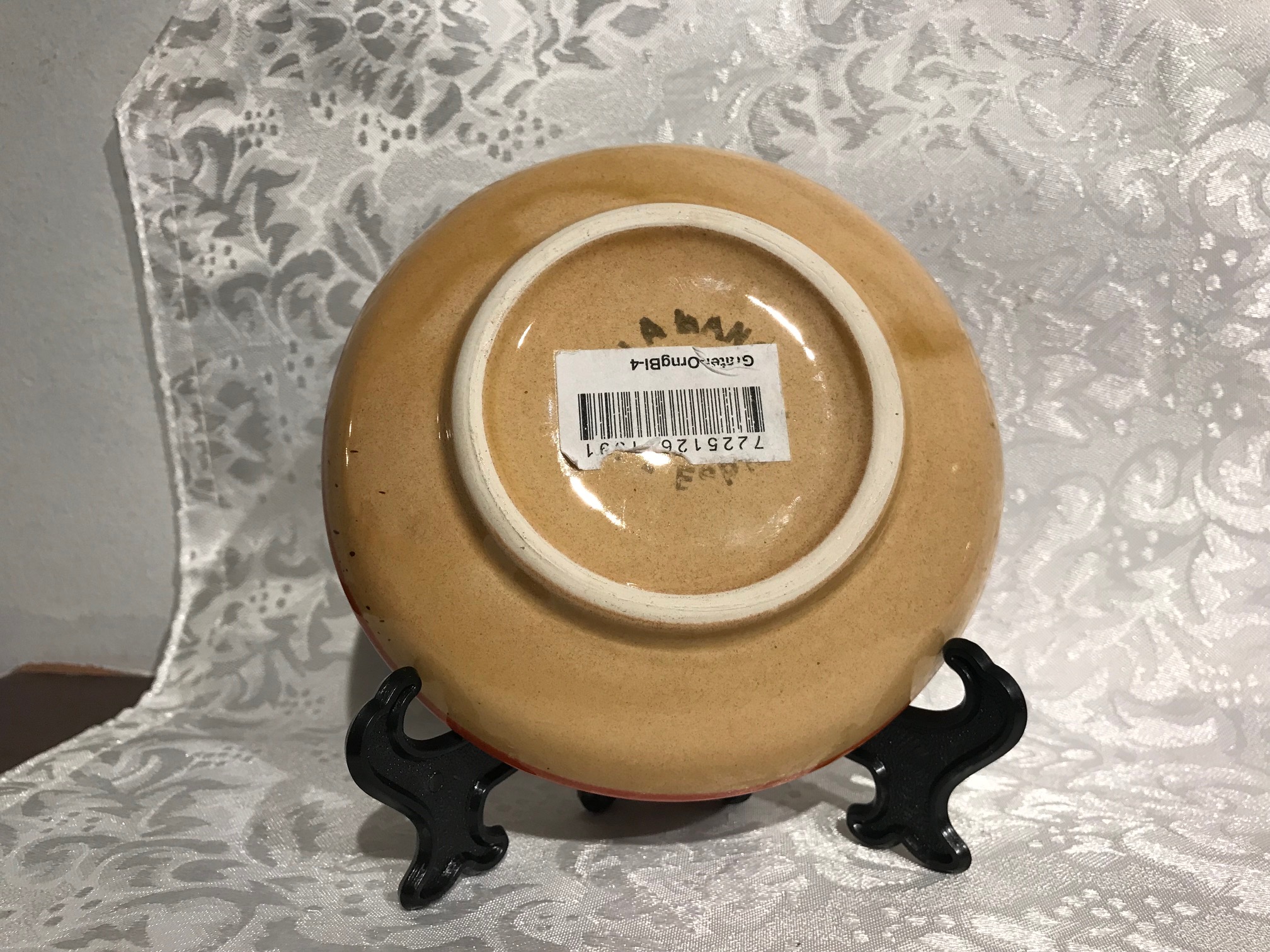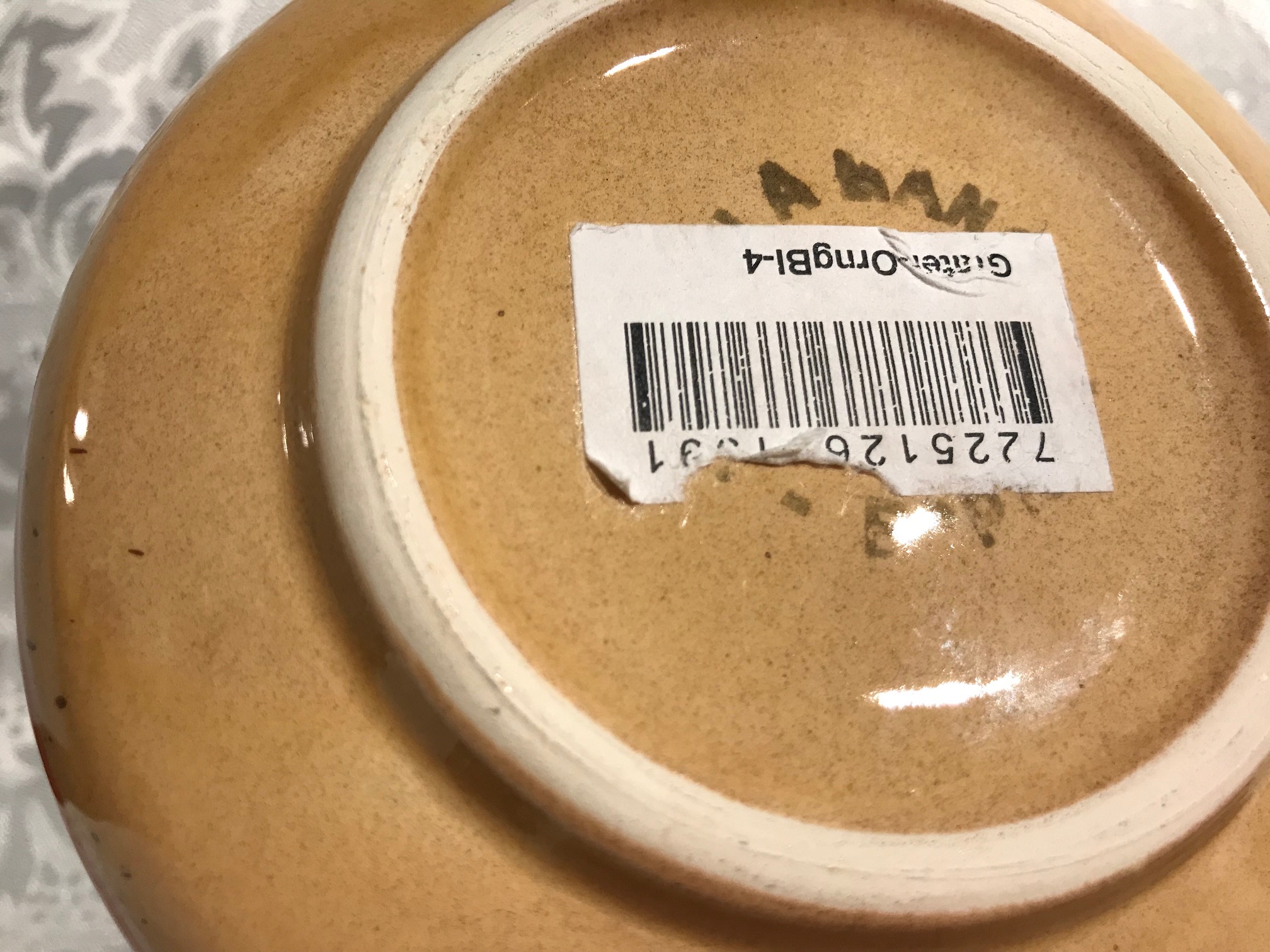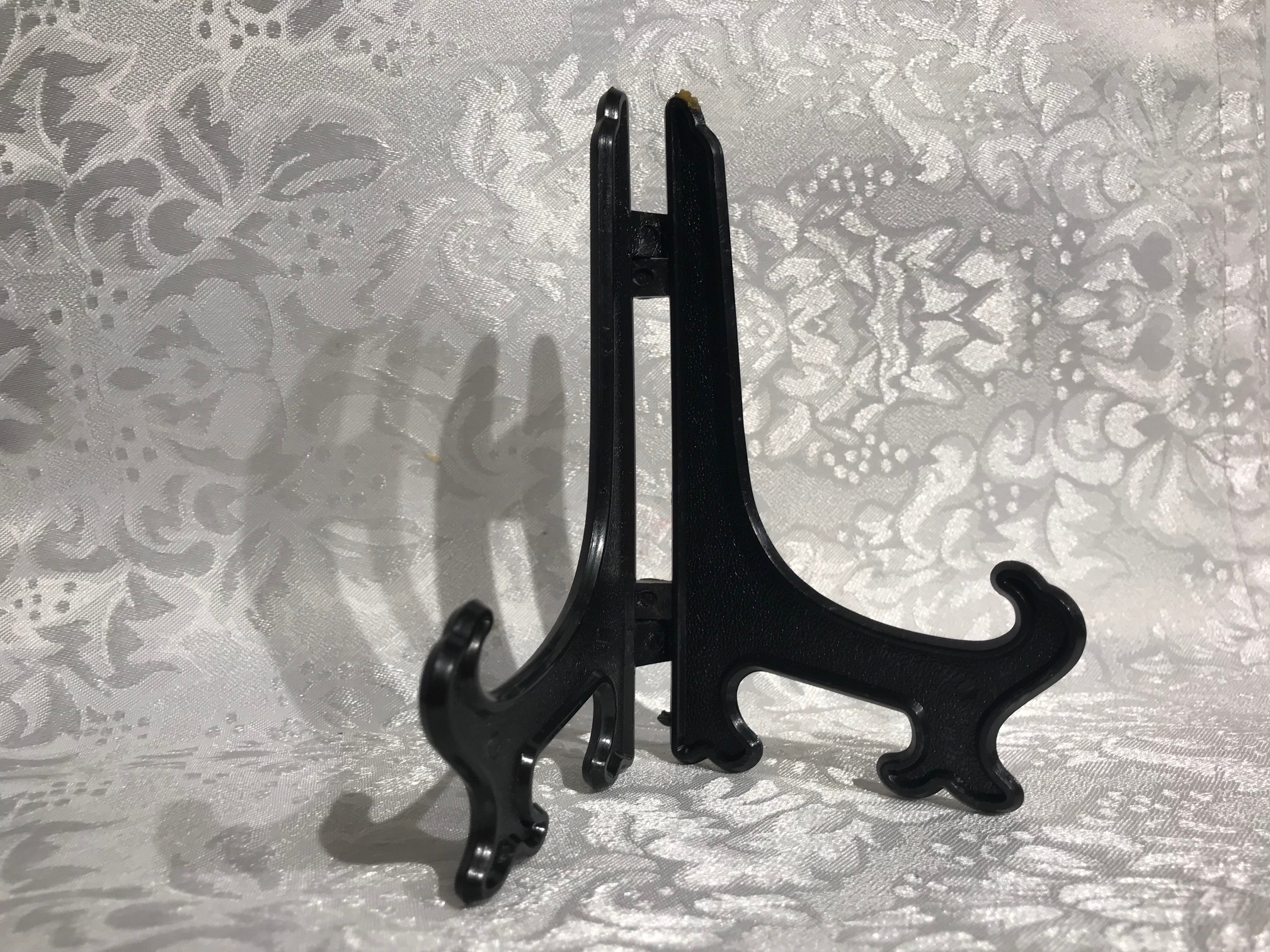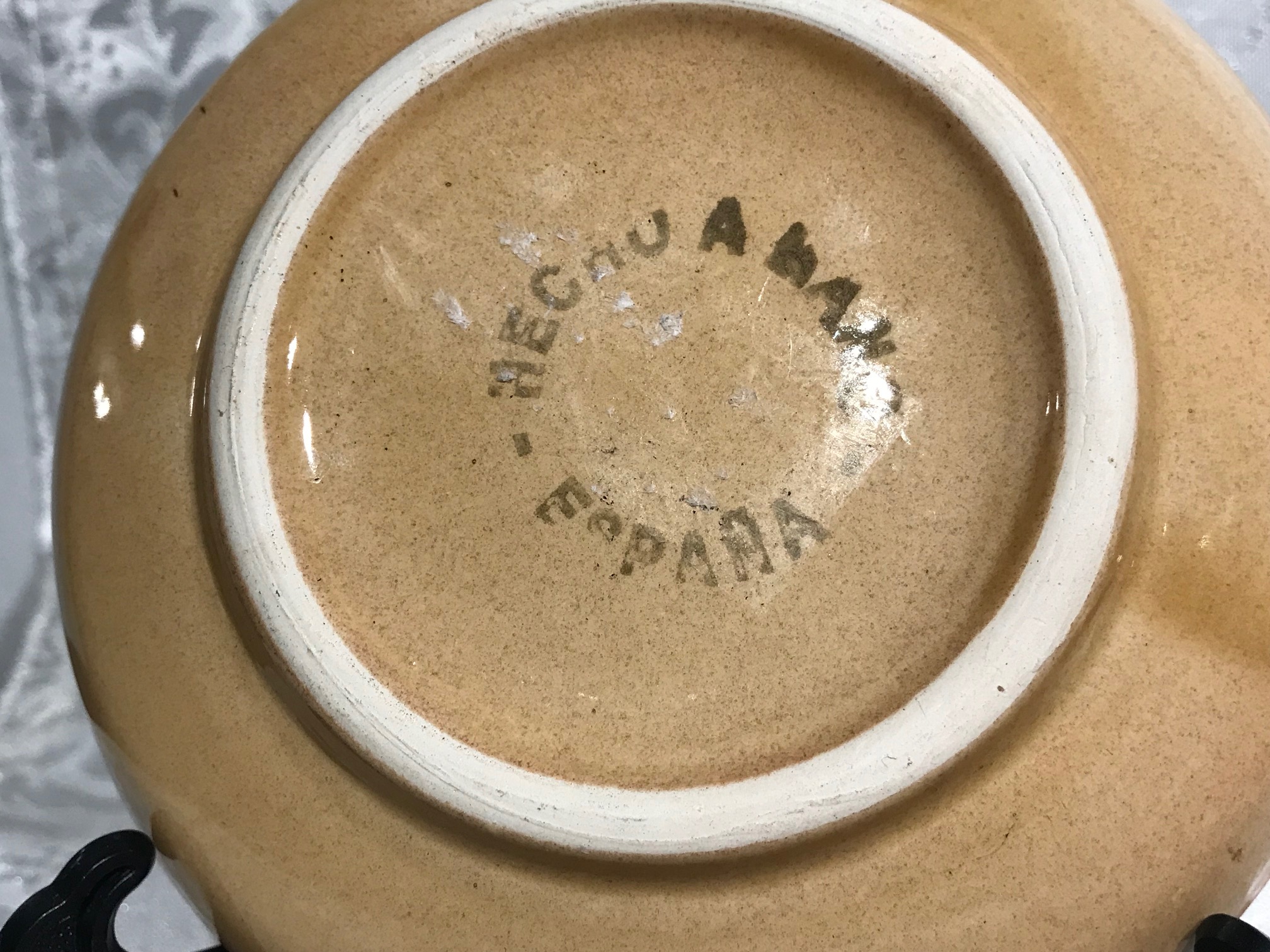Made in Spain – glazed ceramic garlic grater plate: 30,300 ppm Lead (90 is unsafe in items intended for children).
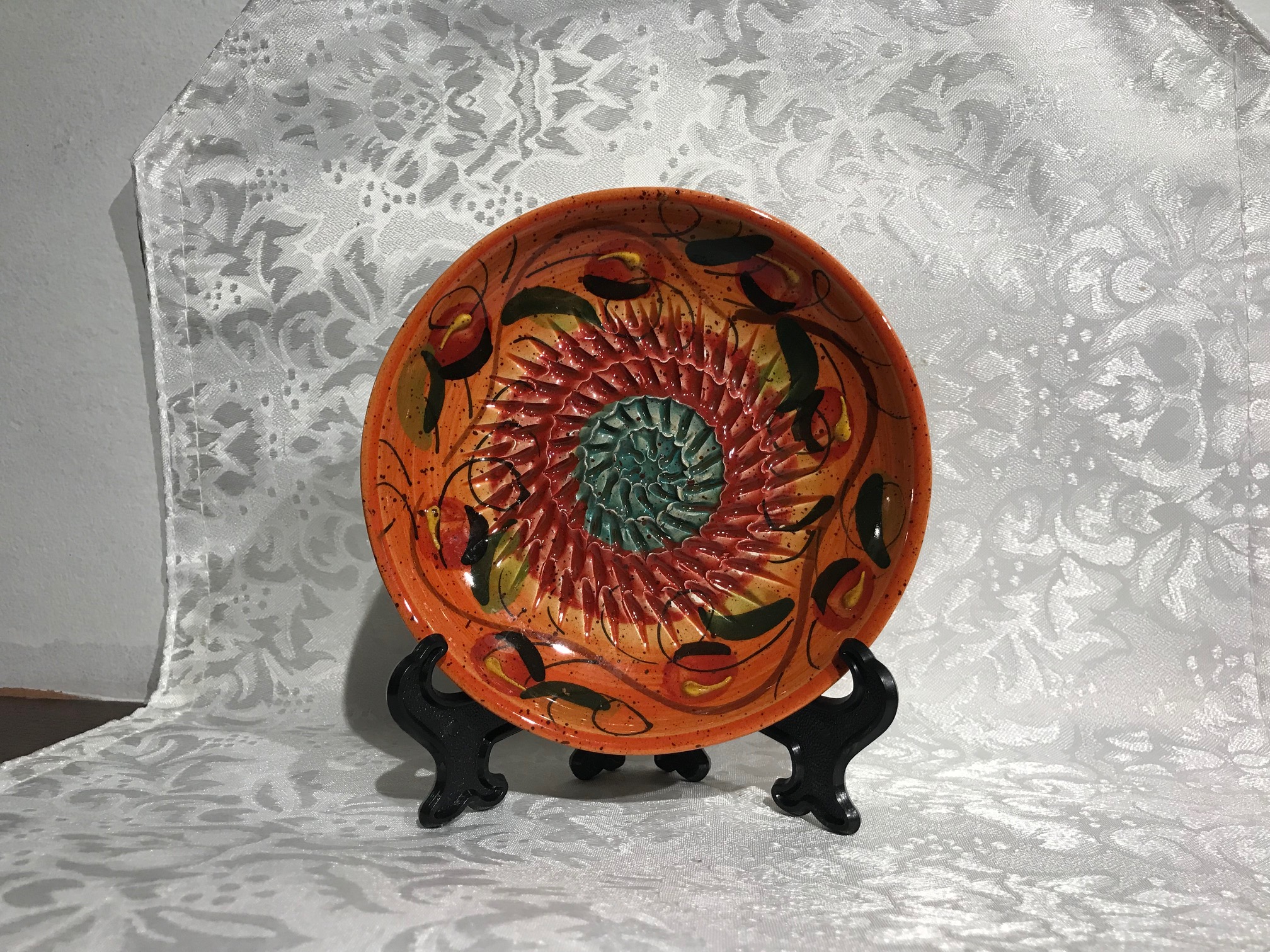 When tested with an XRF instrument this glazed ceramic “Made in Spain” garlic grating plate had the following readings:
When tested with an XRF instrument this glazed ceramic “Made in Spain” garlic grating plate had the following readings:
Reading #1) On the green glazed section in the center of the plate (image above):
- Lead (Pb): 24,400 +/- 700 ppm
- Barium (Ba): 1,844 +/- 136 ppm
- Chromium (Cr): 459 +/- 129 ppm
- Antimony (Sb): 99 +/- 32 ppm
- Zinc (Zn): 8669 +/- 350 ppm
- Iron (Fe): 14,200 +/- 700 ppm
- Vanadium (V): 1,861 +/- 132 ppm
- Titanium (Ti): 5,528 +/- 313 ppm
- Zirconium (Zr): 8,181 +/- 316 ppm
Reading #2) On the dark orange glazed section in the food surface of the plate (image above):
- Lead (Pb): 30,300 +/- 900 ppm
- Cadmium (Cd): 781 +/- 49 ppm
- Barium (Ba): 1,922 +/- 146 ppm
- Antimony (Sb): 104 +/- 36 ppm
- Tin (Sn): 471 +/- 41 ppm
- Zinc (Zn): 8,188 +/- 333 ppm
- Copper (Cu): 143 +/- 57 ppm
- Iron (Fe): 15,500 +/- 700 ppm
- Vanadium (V): 1,972 +/- 143 ppm
- Titanium (Ti): 6,152 +/- 349 ppm
- Zirconium (Zr): 9,616 +/- 375 ppm
Continue reading below the image for additional test result sets and images.
Reading #3) On the cream-colored glaze on the back of the plate (image above):
- Lead (Pb): 1,410 +/- 57 ppm
- Barium (Ba): 940 +/- 94 ppm
- Antimony (Sb): 84 +/- 19 ppm
- Zinc (Zn): 6,940 +/- 241 ppm
- Iron (Fe): 16,400 +/- 600 ppm
- Vanadium (V): 2,212 +/- 127 ppm
- Titanium (Ti): 6,498 +/- 299 ppm
Continue reading below the image for additional test result sets and images.
Reading #4) On the unglazed edge on the back of the plate (image above):
- Lead (Pb): 4,700 +/- 132 ppm**
- Barium (Ba): 867 +/- 64 ppm
- Antimony (Sb): 41 +/- 19 ppm
- Zinc (Zn): 4,217 +/- 168 ppm
- Iron (Fe): 11,100 +/- 500 ppm
- Vanadium (V): 1,356 +/- 96 ppm
- Titanium (Ti): 5,069 +/- 250 ppm
- Platinum (Pt): 160 +/- 75 ppm
** This is VERY unusual – for an unglazed substrate to test this high for Lead!
Continue reading below the image for additional test result sets and images.
Reading #5) The plastic stand for the plate (image above):
- Lead (Pb): 23 +/- 4 ppm
- Bromine (Br): 137 +/- 5 ppm
- Zinc (Zn): 195 +/- 12 ppm
- Iron (Fe): 441 +/- 32 ppm
Each test was done using a freshly-calibrated XRF instrument in “Consumer Goods” mode. Testing was repeated on each component to confirm the results. Testing time for each component was at least 60 seconds. Results are replicable, science-based, and accurate. Metals not listed in the above test results sets were not detected by the XRF when testing in Consumer Goods mode.
Is this much Lead and Cadmium a problem in a dish like this?
The amount of Lead that is considered unsafe in an item intended for use by children is anything 90 ppm Lead or higher in the paint, glaze or coating of an item or anything 100 ppm or higher in the substrate. At over 30,000 ppm Lead this dish is VERY TOXIC – but because dishes are not regulated to the same strict standards used for children’s items it is not considered to be illegal at all. The Cadmium level is also very high (for context, in Denmark consumer goods are illegal if they have a total cadmium content greater than 75 ppm.) Cadmium is a known carcinogen – which means it has been studied and determined to cause cancer in humans. To read more about Cadmium standards, click here. It is my assertion that the levels of toxicants that are allowed in food-use items (like dishes and cookware), should be at least as strict as the limits for toxicants allowed in children’s items.
Thank you for reading and for sharing my posts.
Please let me know if you have any questions.
Tamara Rubin
#LeadSafeMama
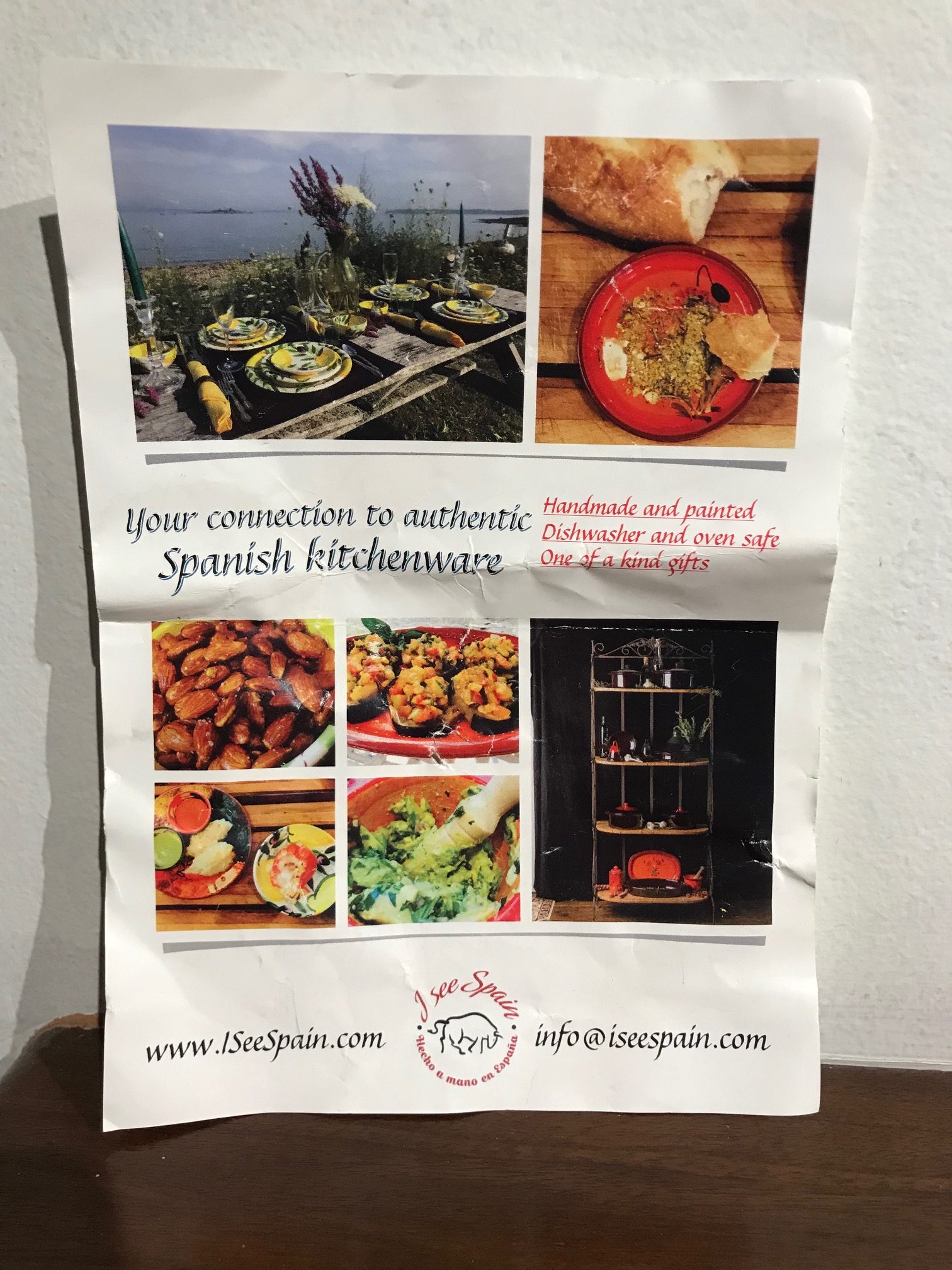
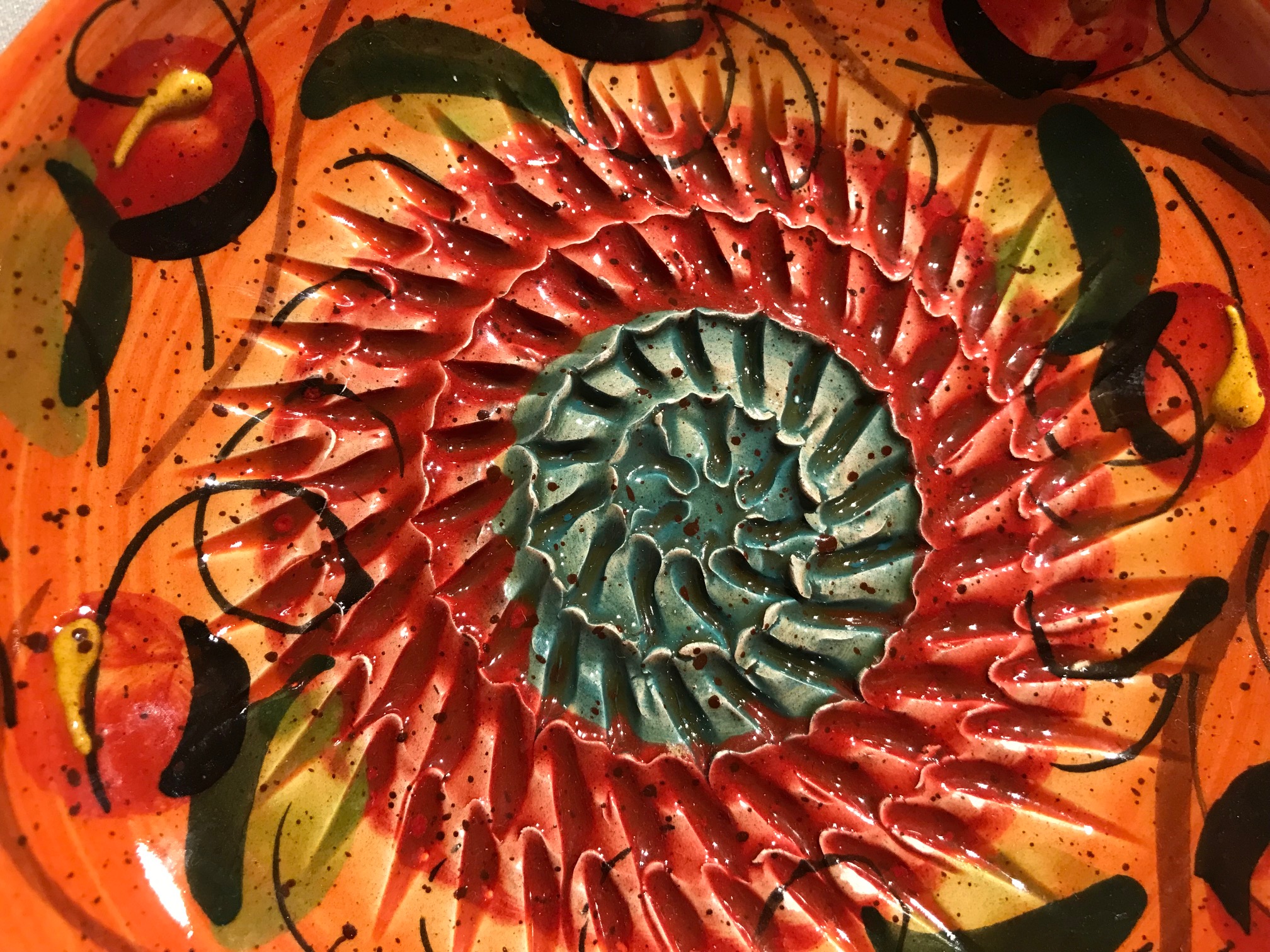
Never Miss an Important Article Again!
Join our Email List


